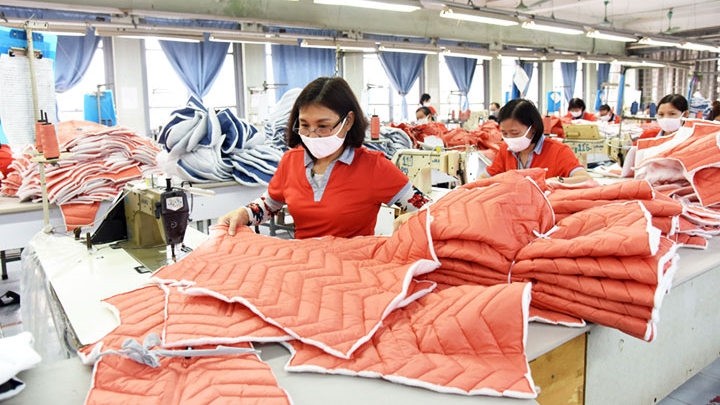The Government will play the role of orienting and encouraging enterprises to take action to grasp the opportunities this Agreement brings about, he noted.
While presenting the EVFTA implementation plan, Minister of Industry and Trade Tran Tuan Anh affirmed that the Agreement is a great opportunity if it can be exploited effectively. But there are also many challenges, especially in a context where the COVID-19 situation is still complicated, and the competitiveness of the economy in general and enterprises in particular is quite limited.
Experience in implementing the Comprehensive and Progressive Agreement for Trans-Pacific Partnership (CPTPP) for more than a year shows that the Government, ministries, sectors and localities should quickly devise implementation plans with specific actions and the right focus in order to help the Agreement come to life in a timely and effective manner, he added.
With EVFTA, the Prime Minister issued a full and synchronous implementation plan focusing on five major areas of content, including: information dissemination on the EVFTA and markets of EU countries; legal and institutional development work; measures to improve competitiveness and develop human resources; policies and guidelines for trade unions and labour organisations in enterprises; and policies on social security, environmental protection and sustainable development. Each working group is also built with specific strategic content and actions to overcome shortcomings seen in the implementation of some previous free trade agreements (FTAs).
According to Deputy Finance Minister Tran Xuan Ha, on the basis of the general plan issued by the Government, the Ministry of Finance has developed a separate plan, clearly defining the main tasks, in particular the building of laws and institutions. The Ministry has submitted to the Government for promulgation a decree on preferential export-import tariffs for the implementation of the EVFTA for the 2020-2022 period.
Meanwhile, localities across the country have also shown their thorough preparations. Vice Chairman of the Ho Chi Minh City People’s Committee Duong Anh Duc said that since the European Commission approved the EVFTA (October 2018), the city has actively implemented many solutions to support businesses to take advantage of opportunities brought about by the Agreement. The focus is on understanding the rules of origin, considering this as a key factor to enjoy preferential tax rates. The city will also soon issue a logistics development master plan by 2025, with a vision to 2030.
According to Chairman of the Hanoi City People’s Committee Nguyen Duc Chung, 23 out of 27 European countries are currently investing in Hanoi with total capital of US$4.16 billion, focusing on such fields as support industries and hi-tech goods manufacturing. In recent times, the city has built a comprehensive implementation plan for investment and cooperation promotion between Hanoi and EU countries in order to attract more capital flows into the pharmaceutical, medical and supporting industries, he said.
At the conference, comments from the business community showed that preparations were relatively ready. Representatives of associations also proposed many recommendations to help businesses make more effective use of opportunities from the EVFTA.
Director General of the Vietnam National Textile and Garment Group (Vinatex) Le Tien Truong said that the EVFTA has an important provision that allows the use of aggregate materials from countries having the FTA with the EU.
To prepare for the implementation of the EVFTA, in recent times the textile and garment industry has seen a large shift in purchasing from the Republic of Korea (RoK) and Japan with the total amount of fabric imported from these two countries currently accounting for 25% of total domestic demand.
If Vietnam quickly makes an agreement with the RoK and Japan on rules of origin, in addition to the 20% of domestic raw materials, Vietnam will have 45% of the goods that can enjoy preferential tax from the EVFTA. Therefore, Vinatex Director General proposed that the Ministry of Industry and Trade quickly finalise related agreements with Japan and the RoK.
In addition, he underscored the need to continue to attract investment for domestic raw material production by planning and investing in industrial zones dedicated to supporting industries for the textile and garment industry.
According to General Secretary of the Vietnam Leather Footwear and Handbag Association Phan Thi Thanh Xuan in the coming period, in order to take advantage of the opportunities from EVFTA, the footwear industry should focus on developing the supply of raw materials and inputs.
First of all, there should be policies to encourage the establishment of research and development centres for footwear products. Besides this, industrial and technological zones for the production of raw materials must be built; while trade centres, fairs and exhibitions connected with the logistics system should also be set up.
There should be more programmes on human resource development for enterprises, focusing on linking international training to take advantage of foreign knowledge and technologies, bringing domestic production levels gradually towards those of developed countries, she noted.
















